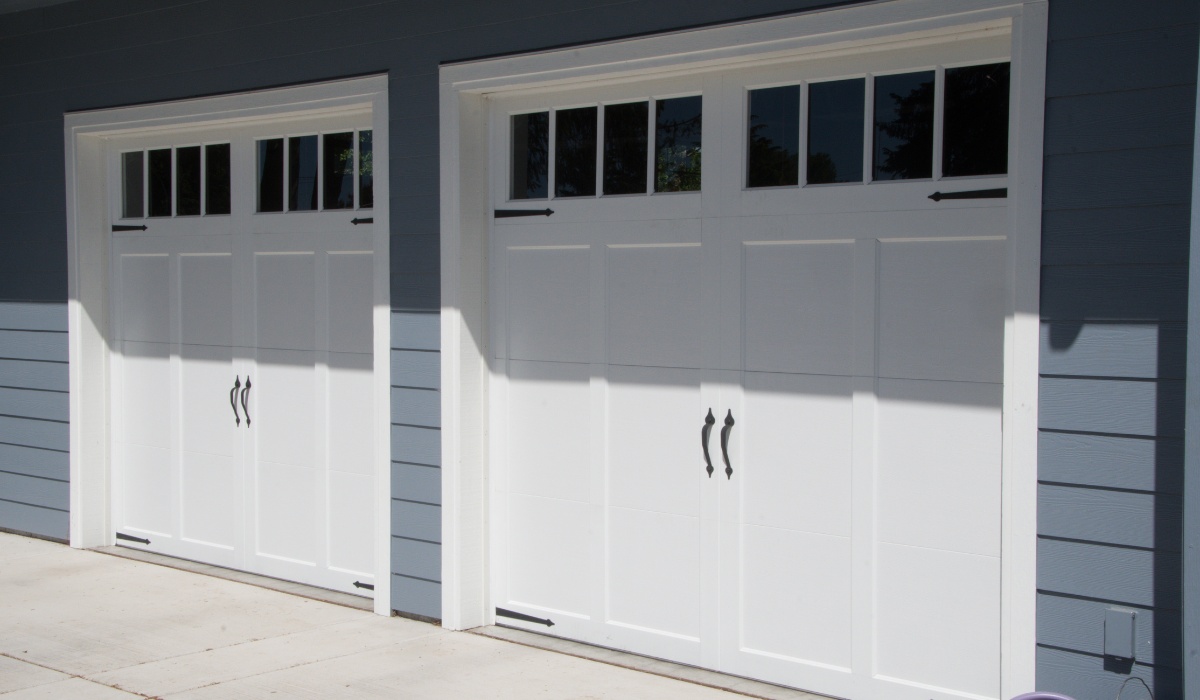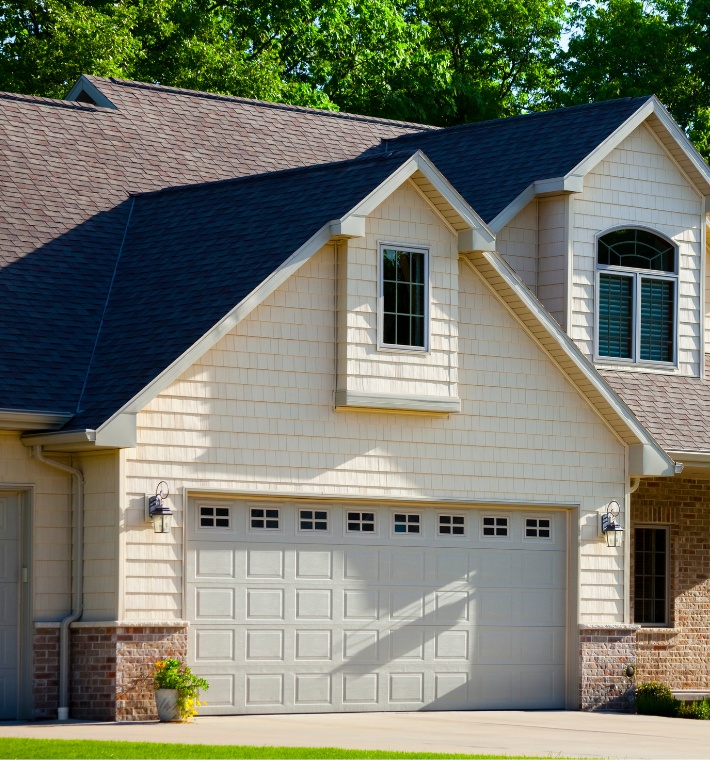Your garage door is more than just an entry point; it’s a key component of your home’s security and convenience. When you face issues like noisy operations, stuck doors, or broken springs, it’s essential to understand the causes and decide whether you can fix it yourself or if professional help is needed. This comprehensive guide answers common garage door repair questions, provides step-by-step troubleshooting advice, and offers expert tips to keep your door operating smoothly year-round.
Common Garage Door Problems and Their Causes
Garage doors are complex systems with multiple moving parts working in harmony. When something goes wrong, identifying the root cause quickly can save time and repair costs.
Common problems include:
- Broken Springs: Torsion springs or extension springs that break due to wear and tear cause the door to become heavy and unbalanced. Cable Repair: Frayed or snapped cables impair door movement and pose safety risks. Off Track or Bent Track: Misaligned or damaged tracks cause the door to jam or move unevenly. Panel Damage: Dents or cracks weaken structural integrity and affect smooth operation. Jammed or Stuck Door: Often caused by debris in tracks, worn rollers, or spring issues. Noisy Door: Rattling, grinding, or squeaking usually points to dry hardware, misaligned rollers, or failing springs. Slow Door Movement: Results from opener malfunction, friction in moving parts, or misadjusted limit switches.
Understanding terms such as spring tension, torsion spring, extension spring, and roller replacement helps you recognize which component might be causing trouble. For example, broken rollers or misaligned door panels often require precise realignment to restore smooth function.
Signs Your Garage Door Needs Repair
It’s important to catch issues early by watching for these warning signs:
- Sensor Issues: If safety sensors are obstructed or misaligned, the door may reverse unexpectedly or refuse to close. Keypad and Remote Control Problems: Frequent failures in opening or closing could be due to dead batteries, faulty remotes, or programming errors. Opener Programming Glitches: Incorrect limit switch or force setting adjustments lead to incomplete door closure or excessive force application. Unusual Noises or Vibrations: Grinding or screeching sounds often signal worn hardware or failing motor components.
Regular sensor calibration and remote battery checks help maintain safe, reliable operation.
DIY Garage Door Repair: When and How to Fix It Yourself
Many minor garage door issues can be handled https://writeablog.net/fridiefesz/do-you-offer-weekend-or-holiday-garage-door-repair-service by confident homeowners equipped with basic tools and knowledge. DIY repairs save money and allow you to tackle small maintenance tasks before they escalate.
Key tasks suitable for DIY include:
- Lubrication and Maintenance: Regularly oiling springs, rollers, hinges, and tracks reduces noise and friction. Opener Troubleshooting: Replacing remote batteries, checking circuit boards, or resetting keypads. Hardware Inspection: Tightening loose bolts, replacing weatherstripping seals, and repainting worn areas. Door Alignment and Seal Replacement: Adjusting tracks gently and installing new insulation or weatherstripping to improve energy efficiency.
Step-by-Step Repair Guides for Common Issues
- Spring Replacement: Only attempt if experienced. Release all tension, remove the broken spring carefully, and install a new torsion or extension spring with correct tension settings. Roller Replacement: Remove old rollers from tracks, lubricate new rollers, and install ensuring smooth rotation. Cable Repair: Carefully replace frayed cables, maintaining proper tension to avoid injury and door imbalance. Bent Track Realignment: Loosen fasteners, gently hammer out dents, then retighten securely to restore door path. Sensor Reset: Clean lenses, realign sensors so infrared beams connect properly, and test reversing feature. Keypad Programming: Follow manufacturer instructions to clear memory and reset code sequences for secure access.
Always perform a thorough safety check before starting any repairs to avoid accidents.
When to Call a Professional Garage Door Repair Technician
Some garage door issues require specialized tools, experience, or pose safety risks that make professional assistance the best choice.
Situations warranting expert service include:
- Emergency Service Needs: Doors stuck open or closed, broken springs, or cables that risk injury require immediate attention. Same Day and 24 Hour Repairs: Many providers offer emergency response to restore security quickly. Motor or Circuit Board Replacement: Complex electrical repairs typically need licensed technicians. Parts Replacement and Warranty Work: Professionals provide genuine parts and honour product warranties. Service Calls with Diagnostic Evaluation: Assessing the full condition of your door system for long-term reliability.
Choosing the Right Garage Door Repair Service
Do your research before hiring a company to ensure quality and fair pricing:
- Budget Considerations: Obtain multiple quotes and ask for detailed estimates. Technician Qualifications: Verify licenses, insurance, and training certifications. Warranty and Guarantees: Opt for services offering workmanship guarantees and parts warranties. Response Times: Fast service is crucial for emergencies and minimizing inconvenience.
A reputable repair technician brings peace of mind and preserves your door’s lifespan.
Garage Door Opener Issues and Solutions
The garage door opener is the heart of automatic door operation. Common opener-related problems include:
- Motor Failure: Motors wear out over time, causing slow or erratic door movement. Circuit Board Malfunctions: Electrical component failures prevent remote signals from activating the door. Remote Control and Keypad Issues: Dead batteries, signal interference, or programming errors disrupt functionality. Limit Switch and Force Setting Problems: Improperly adjusted settings cause the door to stop prematurely or apply excessive pressure.
Troubleshooting steps involve testing power sources, resetting controls, replacing batteries, and adjusting opener settings according to the manual. For recurring opener faults, scheduling professional repair or replacement is advisable.

Preventative Maintenance Tips for Longer Garage Door Life
Routine care extends the life of your garage door and opener while reducing noise and breakdowns.
Top maintenance tips include:
- Regularly lubricate all moving parts including springs, rollers, hinges, and tracks using a suitable garage door lubricant. Calibrate safety sensors every few months to ensure automatic reversal functions correctly. Inspect and replace weatherstripping to prevent drafts, moisture, and pests. Conduct seasonal inspections focusing on door alignment, panel condition, and opener performance. Clean tracks and remove debris to avoid jamming. Test balance by disconnecting the opener and manually lifting the door halfway; it should stay in place without too much force. Check hardware tightness and replace rusty or worn components promptly. Repaint exposed metal or wood panels to protect against corrosion and weather damage. Replace remote batteries yearly and reprogram remotes as needed. Schedule professional tune-ups every one to two years to address hidden wear before it causes failure.
Following these steps minimizes unexpected repairs and improves quiet, smooth operation.
Frequently Asked Garage Door Repair Questions (FAQ)
How do I know if my garage door spring is broken?
You’ll notice the door is unusually heavy, may not open fully, or produces a loud bang when the spring snaps. Visible gaps or distortions in the spring coil also confirm breakage.
Can I fix a garage door off its track myself?
Minor track bends can sometimes be straightened carefully with hand tools, but significant damage or repeated displacements usually require professional realignment.
What causes a garage door to stop responding to the remote?
Common causes include dead batteries, signal interference, incorrect programming, or a faulty receiver in the opener unit.

How much does it cost to repair a garage door spring?
Costs vary depending on spring type and location but typically range from $150 to $350 plus labour.
Are garage door repair emergencies covered on weekends or nights?
Many repair services offer 24-hour emergency coverage, but rates may increase for after-hours work.
What maintenance should I do to avoid costly repairs?
Regular lubrication, inspection of cables and springs, sensor cleaning, and timely hardware tightening are essential.
How do safety sensors work and how can I troubleshoot them?
Safety sensors emit an infrared beam across the door opening. If the beam is blocked, the door reverses. Clean lenses and ensure sensors are aligned at the same height for proper function.
Is it safe to adjust the spring tension on my own?
No. Springs are under high tension and adjusting them without experience can cause serious injury. Always call a professional for spring adjustments or replacements.
Maintaining and repairing your garage door doesn’t have to be a mystery. Understanding common problems, performing regular maintenance, and knowing when to call a professional will save you time, frustration, and money. Whether you’re troubleshooting a noisy door, dealing with sensor issues, or considering a full spring replacement, the right knowledge empowers you to make safe and effective decisions. For complex repairs or emergency service, trust certified technicians who prioritize your safety and satisfaction. Start protecting your home and extending the life of your garage door today by applying these practical tips and insights!